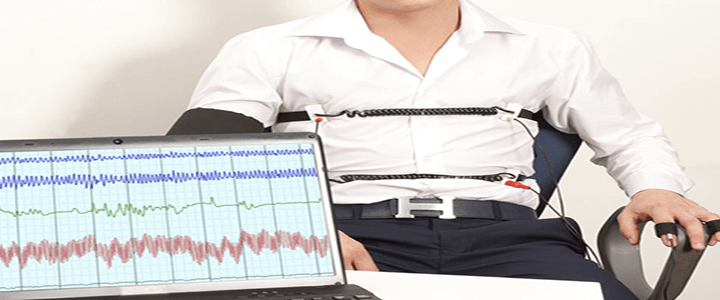Holden: The tortoise lays on its back, its belly baking in the hot sun beating its legs trying to turn itself over but it can’t, not without your help, but you’re not helping.
Leon: What do you mean I’m not helping?
Holden: I mean, you’re not helping. Why is that Leon? They’re just questions, Leon. In answer to your query, they’re written down for me. It’s a test, designed to provoke an emotional response. Shall we continue?
In Ridley Scott’s Blade Runner, loosely based on science fiction great Philip K. Dick’s Do Androids Dream of Electric Sheep, Blade Runners Dave Holden and Rick Deckard administer a Voight-Kampff test to determine if suspects are human beings or replicants by reading emotional responses.
Science fiction? Not anymore. I mean, there aren’t any replicants running around . . . that we know of . . . but there are plenty of people looking for security clearances who have trouble telling the truth, the whole truth, and nothing but the truth.
ENTER FRAUDSCOPE
Fraudscope is Tselina Data Lab’s own artificial intelligence, machine learning Voigt-Kampff polygraph that uses cameras and computers to detect “truth and lie with high accuracy, which helps you make correct [sic] decision! [sic]” (I’ll stop indicating sic erat scriptum, “thus was it written,” since the Tselina’s translated page is a translated (poorly) from Russian.) Tselina Data Lab is a Russian machine learning team, “a team of enrapt data scientists, matematicians, experienced engineers and solutions architects.” And Fraudscope is their “remote monitoring complex that analyses the veracity of the subject’s answers.”
HOW IT WORKS
Fraudscope . . . and I hate to keep using quotations, but this is just too good . . . “performs ultivariate analysis of 35 dependencies on various physiological parameters.” The psychological parameters that Fraudscope analyzes include changes in pulse and respiration, pupil size and eye movement, and nearly 30 muscle movements in your face. The eye analysis closely mirrors Holden’s and Deckard’s replicant test, that focuses squarely on the eyes and reactions: “Reaction time is a factor in this, so please pay attention.” Likewise, the Fraudscope, “performs a calculation of values of speeds, accelerations and frequencies . . . .” All it takes is a computer and a camera.
DOES IT WORK?
In some regards, without a doubt. One of the advantages of having Fraudscopes sitting around the office, according to Tselina, is the simple intimidation factor. If you’re talking to your boss and she has her Fraudscope aimed at you, it could dissuade you from fibbing. “Presence of FRAUDOSCOPE in the office and complete understanding by employees that their illegal actions can be detected is a crucial stop-factor.”
In classic Kremlin-esque terms, Fraudscope can be use for “[i]dentification of disloyal employees and intentions of potential employees during hiring procedures” and “[c]heck the intentions of government employees.” Finally, and this feature may soon shoot Tselina’s stocks through the roof, it can screen “migrants to identify hidden threats.”
HUMANITY FACTOR
Digital Trends’ Hillary Grigonis reports that “experts in the field of facial expressions such as the State University of New York at Buffalo professor Mark Frank agree that some people can get away with a lie without any characteristic tell. But,” Grigonis continues, “in theory, with enough interviews in the database, the system could eventually learn to detect most lies with minimal prep work.”
And we’re still left with that grey-area hurdle: what exactly may be facial twitches, eye movement, and changes in respiration and heart rate tell us, for sure? Price on Economics’ Simon Gardner concludes, “The question of whether polygraphs can detect lies is an open-and-shut case. . . . To put it bluntly, the polygraph can be an effective interrogation tool in the hands of the right examiner, but there’s a real danger of the test producing ‘false positives’ (misclassifying innocent people). And,”
he adds, “minorities facing biased assumptions of their guilt are especially likely to be nervous during a polygraph and fail the test.”
Remember Rachael, Tyrell Corporation’s most advanced replicant. Rachael was nearly able to beat the Voight-Kampff machine, Ridley Scott’s version of the Fraudscope. But she could come close to beating it only because she didn’t know that she, too, was a replicant, which opens the question to the rest of us.
Blade Runner is set in Los Angeles, California, in the year 2019. 2017 is right around the corner. Fraudscope is now.



